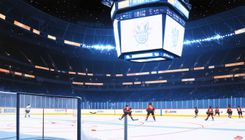New NHL Collective Bargaining Agreement Alters Prospect Development Pathways

The existing NHL collective bargaining agreement (CBA) is set to expire in September 2026. This timeline may cause concern for those with extended experience in the sport. However, the NHL owners and the NHL Players Association have surprisingly reached a preliminary agreement on the framework for a new deal during the summer. While the comprehensive Memorandum of Understanding pertaining to the new CBA has yet to be fully disclosed to the public, notable changes have already been highlighted by NHL insider Frank Seravalli. A significant modification allows each NHL team to assign one 19-year-old prospect to their AHL team each season, impacting a potential maximum of 32 players annually. The implications of this shift could significantly alter the developmental landscape for NHL prospects.
Under current regulations associated with the CHL-NHL agreement, players drafted from one of the Canadian major-junior leagues—namely the OHL, WHL, or QMJHL—are prohibited from being assigned to the AHL or ECHL until they either reach the age of 20 or complete four seasons in the CHL. However, players who were selected from alternative junior leagues and subsequently joined a CHL team are not subject to this restriction. With the new CBA not taking effect until the 2026-2027 season, the first players affected by this change will be those born in 2007. For instance, Braeden Cootes, a prospect for the Vancouver Canucks, will turn 19 in February 2026, opening the possibility for him to be assigned to the Abbotsford Canucks later that fall, should the team's management determine that his continued development in the WHL is not optimal.
The age-based criteria for this new rule grants NHL teams the flexibility to assign newly drafted CHL players who reach 19 in the fall immediately following the draft directly to the AHL, bypassing a return to CHL competition. A prime example includes Ryan Roobroeck, a top prospect eligible for the 2026 draft. As a September 2007 birthday, if Roobroeck signs his entry-level contract post-draft and participates in his NHL team's development camp, he could be assigned to the AHL, rather than returning to the Niagara IceDogs of the OHL. The implementation of this developmental pathway is particularly valuable for CHL-affiliated prospects who may find themselves in a position where they are neither ready for NHL play nor suitable for further CHL competition. This new avenue permits players to engage with professional hockey sooner, refining their skills in an appropriate setting instead of stagnating in their junior leagues, ultimately enhancing their development trajectories.









